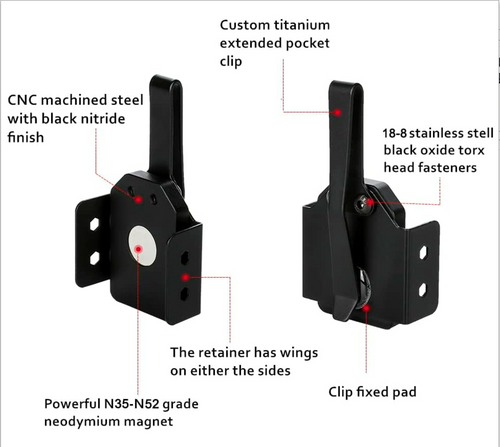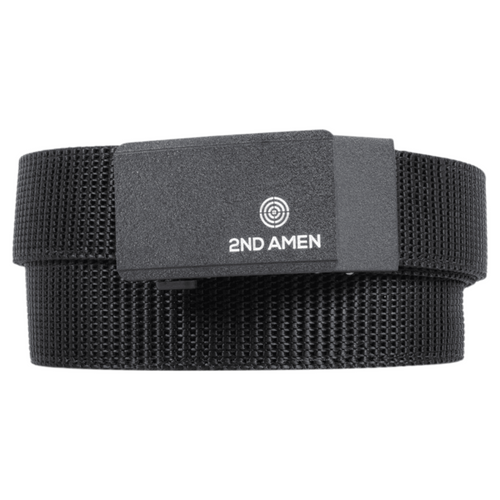When it comes to IWB revolver holsters, small-frame revolvers like the Smith & Wesson J-Frame and Ruger LCR demand precision. Comfort, retention, and concealment all depend on how the holster fits your specific model—and how you fine-tune that fit for everyday carry. If you’ve struggled with holsters that print, shift, or slow your draw, it’s time to rethink your setup.
At Houdini Holsters, every IWB holster is built for adaptability—letting you customize retention, ride height, and cant to match your revolver and your body type. Whether you’re carrying a snub-nose for EDC or training with a full-size revolver, this guide breaks down exactly how to choose the right IWB setup for comfort and performance.

Why Fit Matters for IWB Revolver Holsters
Unlike semi-autos, revolvers have bulkier cylinders that create uneven pressure points when carried inside the waistband. A poor fit can cause discomfort, visible printing, or even an insecure draw.
An IWB revolver holster must account for:
-
Cylinder width: Ensuring the holster shell hugs the frame without pinching or gapping.
-
Grip-to-holster geometry: The relationship between your revolver’s grip angle and the holster’s body profile determines how naturally your hand meets the firearm on the draw.
-
Trigger guard coverage: A precision-molded shell ensures full coverage without drag.
The Breakout 1.0 and Breakout 2.0 IWB Holsters from Houdini Holsters are molded to fit revolvers like the J-Frame and LCR securely while maintaining smooth draw and retention balance.
Key Takeaways:
-
Choose a holster that mirrors your revolver’s frame contour.
-
Prioritize even pressure distribution and trigger protection.
-
A snug, molded fit improves comfort and draw speed.
Tuning Retention for Your Revolver
Retention determines how securely your firearm sits inside the holster—and how smoothly it releases when you draw. Overly tight retention slows response time, while too little can lead to accidental slips.
The Breakout 2.0 IWB Holster uses adjustable retention screws that let you fine-tune pressure on the trigger guard. Start with firm tension, then loosen slightly until you achieve a clean, consistent draw.
Retention should:
-
“Click” into place when reholstering.
-
Require deliberate upward pressure to draw.
-
Maintain consistent resistance over time, even with daily wear.
For revolvers like the J-Frame or LCR, this tuning process is essential. Their short grips and compact frames mean your draw angle is tighter—and the holster must release smoothly without over-gripping the trigger guard.
Quick Setup Tip:
Test your draw 10–15 times after adjusting retention. Make small turns—an eighth rotation at a time—for precision control.
Adjusting Ride Height and Cant for Comfort
The ride height (how high or low your firearm sits on the belt) and cant (the forward tilt of the grip) determine how the revolver conceals and feels throughout the day.
Ride Height:
-
Lower ride height improves concealment but may slow draw speed.
-
Higher ride height speeds access but can print under tight clothing.
Cant:
-
Neutral cant (0°) works best for appendix carry (AIWB).
-
Forward cant (10–15°) suits strong-side or behind-the-hip positions.
The Breakout 1.0 offers straightforward clip adjustment, while the Breakout 2.0 provides advanced customization options for both ride and cant—allowing revolver owners to dial in a perfect setup for AIWB or 4 o’clock carry.
Key Takeaways:
-
Start with a neutral ride height and fine-tune for comfort.
-
Use slight cant adjustments to reduce printing and enhance draw.
-
Test while seated and standing to ensure consistent comfort.
Material Choice: Kydex vs. Carbon Fiber Finish
Choosing between Kydex and Carbon Fiber isn’t just about looks. It’s about balancing rigidity, flexibility, and heat resistance for your carry style.
As explained in our post on Kydex vs. Carbon Fiber Holsters, Kydex offers proven reliability under high-stress conditions, while carbon fiber finishes add strength and reduced weight. Both the Breakout 2.0 and Breakout 1.0 are molded from premium Kydex, ensuring your revolver remains secure even during movement or seated carry.
Key Takeaways:
-
Kydex provides consistent rigidity and retention performance.
-
Carbon fiber adds aesthetic appeal and strength without added bulk.
-
Both materials resist sweat and temperature distortion—critical for IWB revolver holsters.
Pairing with the Right Gun Belt
Even the best IWB revolver holster can’t perform without a stable foundation. A quality gun belt maintains holster position and retention angle during daily wear.
The Houdini Ratcheting Gun Belt offers micro-adjustments for a custom fit—ideal for adjusting throughout the day as you move, sit, or stand. It pairs perfectly with both Breakout 1.0 and 2.0, distributing weight evenly and preventing sag.
Read more about this essential combo in Why a Ratcheting Gun Belt Is the Perfect Partner for Your IWB Holster.
Key Takeaways:
-
A stiff, adjustable gun belt enhances comfort and draw consistency.
-
Ratcheting systems provide incremental control unavailable in standard belts.
-
The belt-holster pairing determines your entire EDC balance.

Choosing Between the Breakout 1.0 and 2.0 for Revolvers
Both holsters share Houdini’s hallmark features—comfort, concealment, and retention—but differ in adjustability and draw optimization.
Breakout 1.0:
-
Uses a Kydex clip (lightweight and low-profile).
-
Offers classic retention and ride height options.
-
Best for revolver carriers who prefer simplicity.
Breakout 2.0:
-
Features advanced retention tuning and claw compatibility.
-
Delivers faster, more natural draw speed.
-
Ideal for revolvers like the J-Frame or LCR carried daily.
Compare both directly on the Houdini store:
Key Takeaways:
-
The 1.0 offers simplicity and all-day comfort.
-
The 2.0 adds performance-driven retention and draw features.
-
Both support revolvers like the J-Frame and LCR for reliable EDC use.
FAQs About IWB Revolver Holsters
1. What’s the best carry position for a J-Frame revolver?
Most carriers prefer appendix (AIWB) or 3–4 o’clock positions for small revolvers. Appendix offers faster access, while 4 o’clock enhances comfort during movement.
2. How tight should retention be on an IWB holster?
Tight enough to hold the revolver securely during daily motion, but loose enough for a smooth, controlled draw.
3. Can the Breakout holsters handle different revolver models?
Yes, both the Breakout 1.0 and 2.0 are available in custom molds for popular revolvers, including J-Frame, LCR, and Taurus snub-nose variants.
4. What belt works best with these holsters?
The Houdini Ratcheting Gun Belt offers unmatched fit precision, enhancing concealment and stability.
Carry Smarter with IWB Revolver Holsters That Fit Right
Choosing the right IWB revolver holster isn’t just about comfort—it’s about readiness. Whether you carry a J-Frame or LCR, the Breakout Series from Houdini Holsters offers the perfect balance of retention, concealment, and comfort for everyday carry.
Explore your fit today and elevate your EDC setup:
Shop the Breakout 1.0 and 2.0 IWB Holsters




